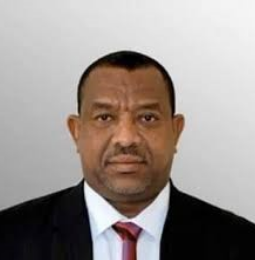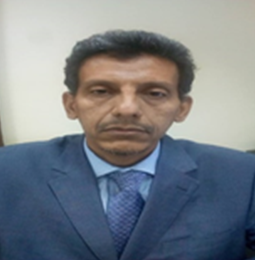


The Aid for Trade (AfT) initiative was one of the most important development-related outcomes of the 2005 World Trade Organization (WTO) Ministerial Conference that was held in Hong Kong. It targets developing countries, particularly Least-developed Countries (LDCs), to strengthen their productive capacities, trade-related infrastructure capacity to compete in regional and global markets.
This global initiative was launched to reinforce commitments by both multilateral and bilateral development partners to prioritize trade capacity development support and by beneficiaries to adopt trade reforms as a key pillar for sustainable growth and poverty reduction strategies.
Since 2005, the AfT initiative has taken off in most of the world’s developing regions, with a phenomenal increase in aid for trade flows, technical assistance, and capacity support, as reported by the Organization for Economic Co-operation and Development (OECD). But the Arab region (22 states) has remained largely on the sidelines. Nonetheless, these countries share the same challenges as many developing countries from other regions in the world.
To address this situation, the Qatar and Egypt Permanent Missions to the WTO, UN Office and Specialized Institutions in Geneva, requested the Islamic Development Bank Group (IsDB) Group to develop an AfT Road Map for the Arab region.
For the International Islamic Trade Finance Corporation (ITFC), member of the IsDB Group: AfT initiative is a partnership between recipient countries, partner countries, and international financial institutions to address the trade-related constraints identified by our Member Countries notably the least developed ones.
The AfT work program was established at the Hong Kong Ministerial in 2005, identifying six categories of AfT: Trade policy, trade development, trade-related infrastructure, building productive capacity, adjustment costs, and other trade needs.
From this perceptive and since 2010, the International Islamic Trade Finance Corporation (ITFC), a member of the IsDB Group, initiated an extensive consultation process through a number of meetings including in Beirut, Geneva, Cairo, and Doha, to discuss and reach a consensus on the main elements of an Aid-for-Trade Road Map for the Arab region. Several organizations and partners participated in this consultative process, notably the League of Arab States (LAS), Arab Maghreb Union (AMU), Gulf Cooperation Council (GCC), Arab Industrial Development and Mining Organization (AIDMO), Arab Union of Land Transport (AULT), Council of Arab Economic Unity (CAEU), the Arab Regional Accreditation Commission (ARAC), WTO, United Nations Development Programme (UNDP), United Nations Economic Commission for Europe (UNECE), International Trade Centre (ITC), United Nations Industrial Development Organization (UNIDO), Organization for Economic Cooperation and Development (OECD), United Nations Economic and Social Commission for Western Asia (UN-ESCWA), and the United Nations Economic Commission for Africa (ECA).
Based on inputs from this consultation process a program document on the “Aid for Trade Initiative for the Arab States (AfTIAS) Program was prepared in 2012.
In this regard, it is worth mentioning that Program was designed to provide a framework for placing Arab countries and the region on a sound trajectory of trade reform under the auspices of the AfT initiative.
From this perspective, the 1st Phase of the AfTIAS Program (AfTIAS 1.0) was designed and launched by the International Islamic Trade Finance Corporation (ITFC) on behalf of the Islamic Development Bank (IsDB) Group in November 2013.
AfTIAS 1.0 Program is a multi-donor, multi-country, and multi-agency program, aiming to “foster Arab trade through enhancing enterprise competitiveness and facilitating trade”.
AfTIAS 1.0 was developed as a response to a request from the World Trade Organisation (WTO) Arab Group in Geneva. The program was originally designed to run from 2014-2016, but this was later extended to December 2018.
AfTIAS Phase 1 (2014-2018) had a US$ 10.5 million budget, including in-kind contributions by the ITFC estimated at about US$ 5 million. It was supported by seven donors and five UN agencies and four other executing institutions contributed to implementing a total of 28 projects in 19 countries.
The AfTIAS 1.0 program is a partnership between 22 Arab Countries (Members of the League of Arab States “LAS”), five United Nations Agencies along with other four Executing Institutions, and seven Donors.
According to the AfTIAS 1.0 P document, the program was arranged around three outcomes:
1. Outcome 1: Enhance regional competitiveness through Trade policy reform and Trade Support Institution efficiency
2. Outcome 2: Strengthen trade supply-side and value chain integration
3. Outcome 3: Strengthen regional and sub-regional organizations’ capacity to foster trade integration
At the end of this phase in 2018, ITFC has commissioned an independent evaluation to assess the effectiveness of the program and to draw lessons learned from its implementation.
In this context, the last AfTIAS Board meeting held in January 2019, expressed its satisfaction with the outcomes of the Program’s evaluation and welcomed also the decision of the Arab Economic Summit held in Beirut (20/01/2019), calling upon ITFC to prepare the 2nd Phase of AfTIAS in cooperation with the League of Arab States (LAS) and all the Arab countries (22).
Based on this decision, the design for AfTIAS 2.0 Program was undertaken from July 2019 to February 2020 and then updated in March 2020 to take into account the new requirements arising from the COVID-19 pandemic impact on the economies of the region.
The design of AfTIAS 2.0 takes into account the key lessons learned identified in the evaluation of the AfTIAS 1.0, in particular, firstly, the need for a strong consultative process during the design phase, the need for a clear theory of change with measurable indicators of success to be developed during the design process. Secondly, AfTIAS 2.0 should be tightly focussed on areas where it would have the greatest impact. Thirdly, the need for adequate financial and human resources to manage any further iteration of AfTIAS was also highlighted.
The AfTIAS 2.0 Program Document presents a summary of the problem analysis, the objectives tree derived from it, the prioritisation of program interventions undertaken based on the need for focus given anticipated budget limitations but also the wide geographical scope and vastly heterogeneous needs of Arab countries, as well as the proposed implementation structures and modalities.
2. AfTIAS 2.0 Program Objectives:
AfTIAS 2.0 is designed as a five-year program. Its development objective of which is to “enhance the environment for international trade in the Arab region by making it more efficient and inclusive, thereby creating opportunities for employment and contributing to sustainable development”.
More specifically, AfTIAS 2.0 Program aims at :
1) increasing intra-regional trade through the removal of market access barriers,
2) increasing the role of Arab states in global value chains, and
3) ensuring that the benefits of trade are shared more inclusively across all population groups, including, in particular, vulnerable groups, such as women, youth, and others.
The following figure indicates the priority interventions which were derived from a comprehensive objectives tree with 8 key results chains responding to the main identified problems faced by Arab traders. The prioritisation of the results chains is a critical element of the programme implementation strategy as it allows AfTIAS 2.0 Program to focus its resources. A careful analytical process was undertaken with each of the eight results chains undergoing scoring against a range of pre-defined factors which were weighted to reflect their importance.
The anticipated minimum budget of the program, considering the estimated operational costs but also the large geographical scope, is US$ 40 million.
A detailed budget has been prepared, along with a resource mobilisation strategy (developed as a separate document).
3. AfTIAS 2.0 Facilities: Area of Focus:
In terms of the implementation approach, AfTIAS 2.0 will operate on the basis of five main facilities:
4. How AfTIAS 2.0 Program works?
The AfTIAS 2.0 implementation structure is based on the following main elements:
A monitoring and evaluation framework has been developed for AfTIAS 2.0. Program performance measurement will be facilitated by a complete set of performance indicators with fully established baselines and end-of-program targets.










